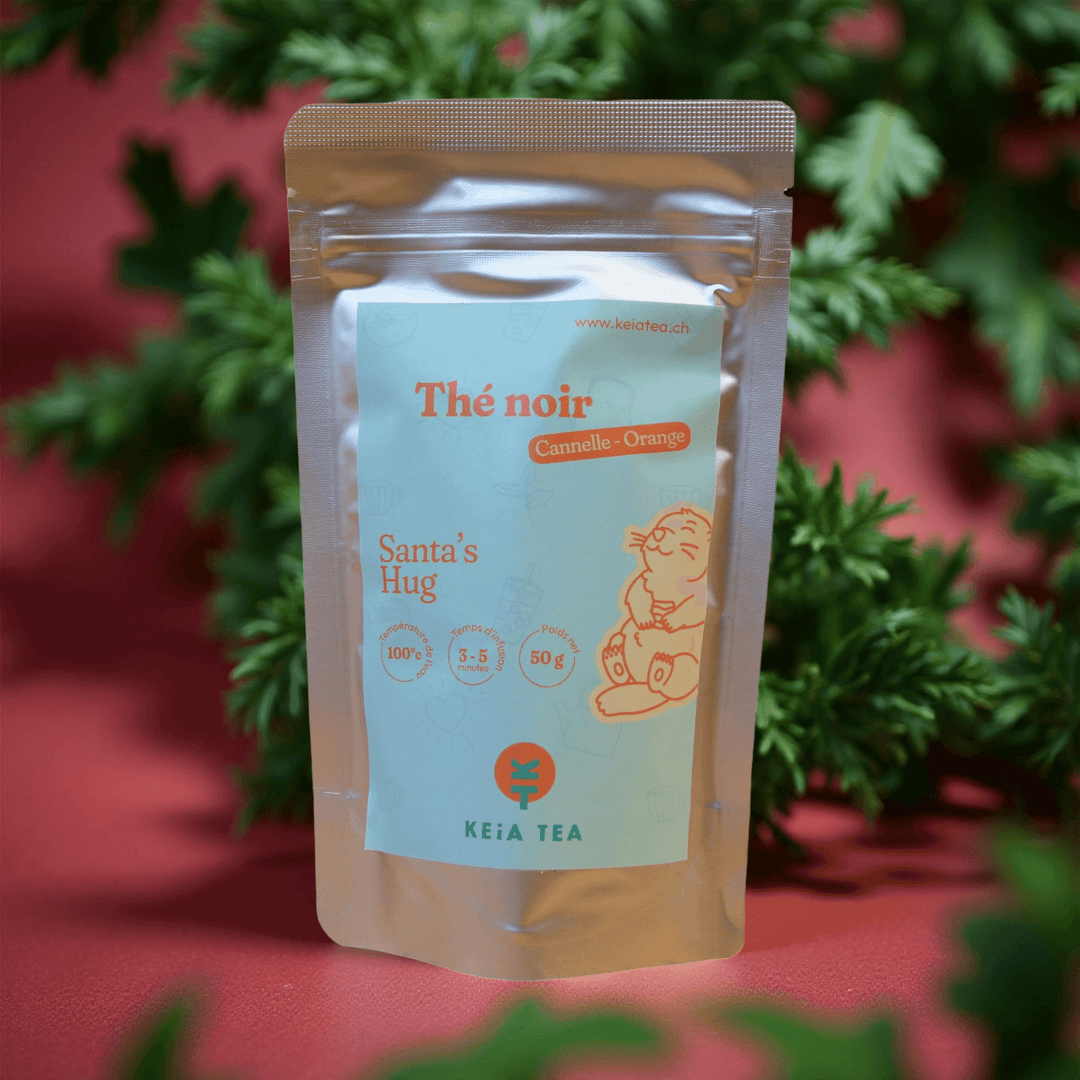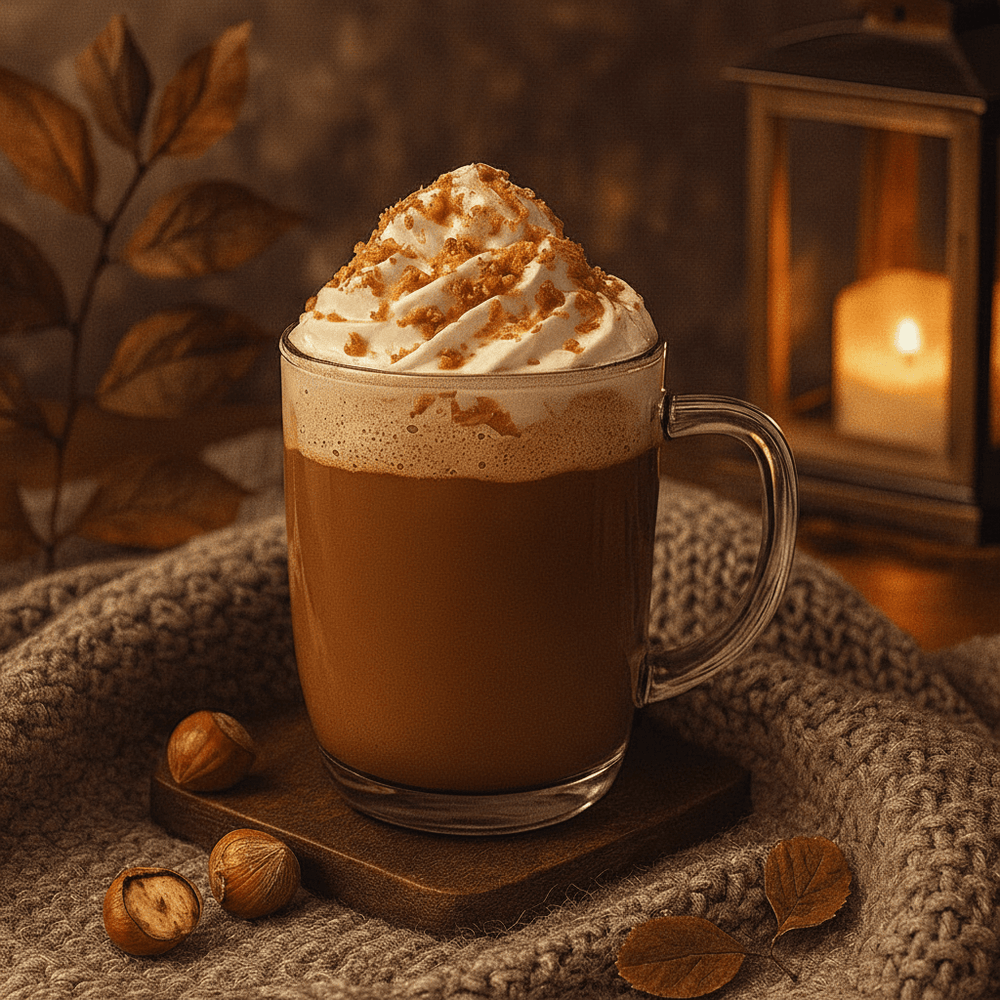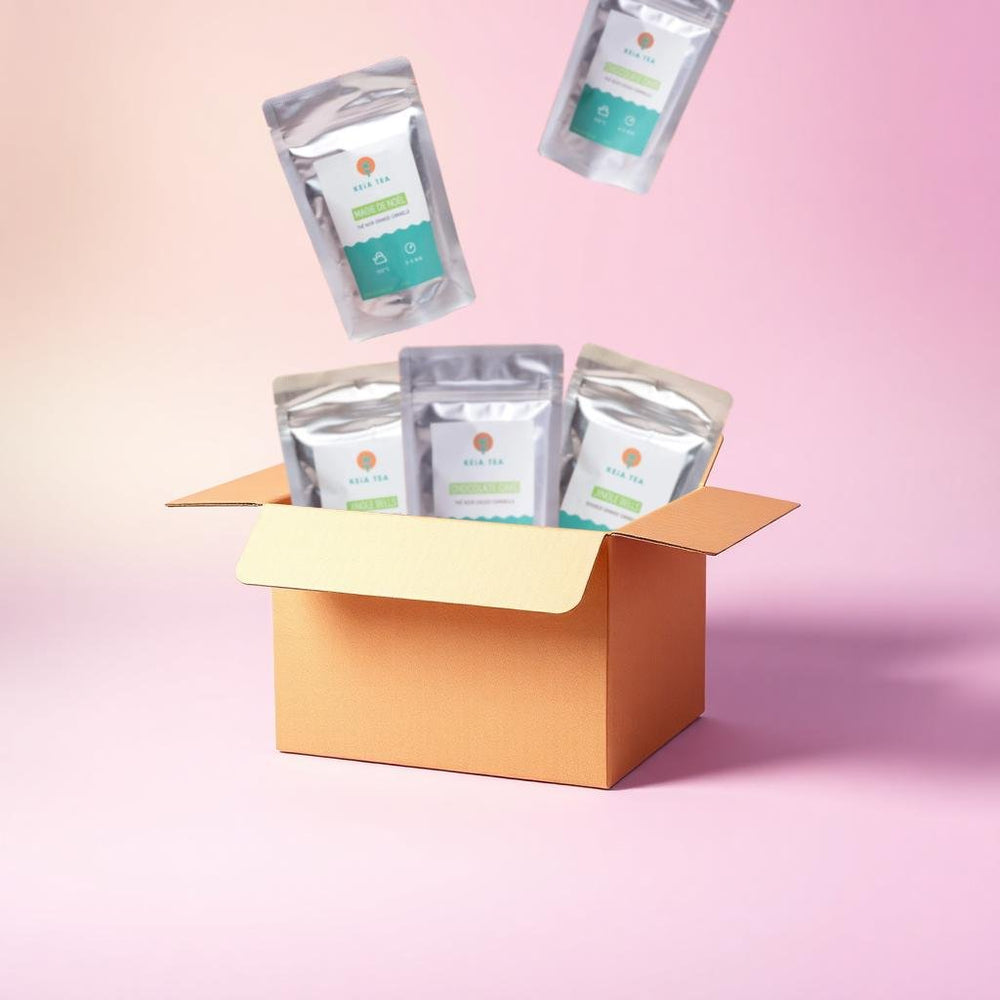What is black tea?

Black tea , one of the most widely consumed beverages in the world, comes from the same shrub as green tea , white tea and oolong tea - Camellia sinensis . His particuliarity ? It's all about post-harvest handling.
The process of making black tea
After harvest, black tea undergoes complete oxidation. This complex process involves several steps:
- Withering : The leaves are exposed to the air to dry them.
- Rolling : The leaves are rolled to release enzymes that trigger oxidation.
- Oxidation : Leaves change color from green to brown to black.
- Drying : The leaves are dried to stop oxidation and preserve their flavor.
The taste of black tea
Black tea is stronger and more robust than its less oxidized cousins. It offers a palette of flavors ranging from malt to chocolate, red fruits to spices, depending on where it comes from and how it is produced.
The different varieties of black tea
There are a multitude of black teas , from different parts of the world. Darjeelings from India are often light and floral, while Assams are robust and malty. Black teas from China, such as Keemun or Lapsang Souchong , offer a range of flavors from smoky to sweet. Without forgetting the famous Ceylon black tea, lively and strong.
The preparation of black tea
Preparing black tea is simple. For loose tea, you need one teaspoon of tea to one cup of water. The water should be brought to a boil (around 90-100°C ), then poured over the tea. Leave to infuse for 3 to 5 minutes , and voilà, your tea is ready to be tasted.
Where to find quality black tea?
Whether you are used to black tea or are looking to discover new flavors, our Swiss online loose tea shop offers a selection of black teas with organic ingredients that will surprise you. Black tea flavored with fruit, with gourmet aromas of vanilla, bergamot and flower petals... There's something for everyone!










